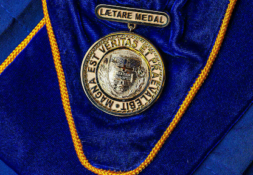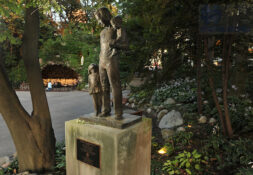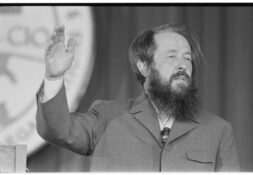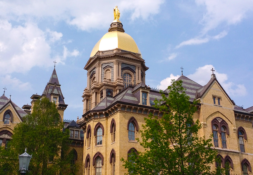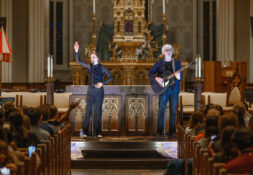The hidden lives of Father Sorin’s companions
The Congregation of Holy Cross did not begin with Father Edward Sorin nor with Blessed Basil Moreau. It began with Abbé Jacques Dujarié in 1820, and according to George Klawitter, C.S.C., “just eighteen years after the end of the French Revolution and the Reign of Terror” with the founding of the Brothers of Saint Joseph.
By the time Father Sorin arrived in South Bend on a blustery, snowy day in November 1842 with his six companions, Blessed Basil Moreau had become the superior for the Brothers of Saint Joseph—now the Brothers of Holy Cross in the larger Congregation of Holy Cross whose members are lay brothers and ordained priests.
Today, there is little evidence on the campus of the University of Notre Dame that for over 150 years, hundreds of brothers in the Congregation of Holy Cross (and Sisters of the Holy Cross) contributed countless hours of their brain and brawn to both literally and metaphorically plant the university’s roots into northern Indiana soil.
Sorin’s six companions, the brothers, have names and histories. It is my honor to write this column revealing to readers the legacy of the men and women behind the scenes—the brothers and sisters who devoted their lives to the ancillary services that assisted their brother-priests to praise God through building this great university in honor of Notre Dame du Lac—Our Lady, the Mother of God.
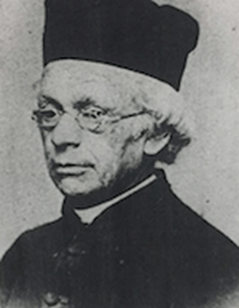
Brother Vincent (Jean) Pieau (1797-1890) was one of the first Brothers of St. Joseph to join Dujarié’s band in 1820 and to teach in parish schools around Le Mans, France. At age forty-five, he was the senior member of the travelers and referred to as the “Patriarch” among the other brothers. For many years, he took an active part in the direction and formation of the novices destined for membership in the congregation.
Father James Trahey, C.S.C. wrote of Brother Vincent in 1906: “How many an icy heart he changed into a burning coal of fervor! How many a marble slab of worldliness he chiseled into the stature of the perfect man! How many a rough bit of quartz he polished into the glittering gem!”
In fact, Father Sorin spoke of Brother Vincent as the “co-founder” of Holy Cross in America, since he and a teenager, Brother Anselm, were picked by Bishop Hailandière to teach in the Cathedral elementary school in Vincennes.
For many long years, Brother Vincent had directed and watched over the formation of the religious spirit in the youthful candidates in the novitiate, and the lessons inspired by his piety and beautiful example left a deep, lasting impression and contributed materially to the infusion of that zeal and devotion which have made the Congregation of Holy Cross, in the United States, so happily successful in the attainment of its mission.
Father Sorin had Brother Vincent buried in the Community Cemetery on the campus, so he would be near him when his own life ended in 1893.
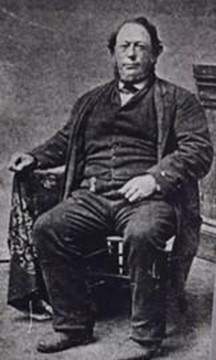
Twenty-six-year-old Brother Lawrence (John) Menage, C.S.C. (1816-1873) was a man of many skills, not the least of which was his business acumen. He assisted with the establishment of Notre Dame’s farm, and for many years was its superintendent and the general outside financier and business manager for the young university.
Menage developed relationships with many prominent business persons in South Bend and northern Indiana towns and villages. Upon his death, the Granger, IN Granger’s Memo reported that “no one in the Community worked harder and more faithfully than himself. Self-sacrificing, ever ready to comply with the wishes of his superior, he recoiled before no hardships. He spent himself for the Community. From the time of his arrival to the hour of his death he was constant in the fulfillment of his duties.”
In 1873, Father Sorin wrote of him in the Circular Letters that “Brother Lawrence carries with him the deep and unfeigned sentiments of esteem and respect not only of his entire Community, but also, I believe of all with whom he came into contact, either as a Religious or a business agent of the Institution.”
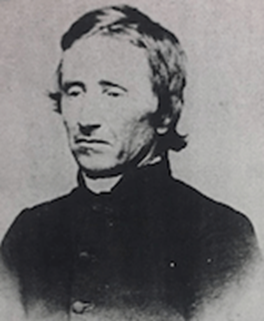
The third member of the band, Brother Francis Xavier (René) Patois, C.S.C. (1820-1896), was born in Clermont, France on July 27, 1820. He was remembered by many confreres as a model religious, regular at all the exercises, industrious to the very last, devoted to the Community, leading a life of great self-denial. He was a cabinet maker by trade, and from the very earliest history of his life in America, in 1841, he was employed as an undertaker. He was frequently called up at midnight, and had to go eight or even twelve miles to attend the dead.
Fr. Corby wrote in a Circular Letter on November 13, 1896: “Hundreds of times he was exposed in rains, snow-storms; perched on an uncovered hearse, slowly making his way to the Church and cemetery. The most remarkable fact in his history is that he came with Very Rev. R.[sic] Sorin in company with five other Brothers in 1841. He survived every one of that devoted band who founded Notre Dame. It would be hard to find in history a more devoted band of missionaries than the band of which Brother Francis Xavier was the last survivor.”
The minutes of the Congregation’s local council meetings record that Brother Francis Xavier served as assistant and Master of Novices, made a steeple for the church of St. Joseph, built an altar on which Sorin said Mass in the log chapel, made the coffins for all who died at Notre Dame, and “most likely will do the same kind office for many more before he drives the last nail into his own” (Prof. Lyons, (J.A.) Silver Jubilee of Notre Dame, p. 11, 1869).
Upon his death in 1896, it was reported in Volume 30 of the Scholastic that “he wore his honors gracefully, and to the end he remained the prayerful, laborious, amiable, humble religious that he was in youth. Such men never die. They live again in every life their example has helped to sanctify.”
There are no photographs of the three remaining members of this first group of brothers to come to the States. The images below were created by Holy Cross artist Brother Harold Ruplinger (1926-2009).
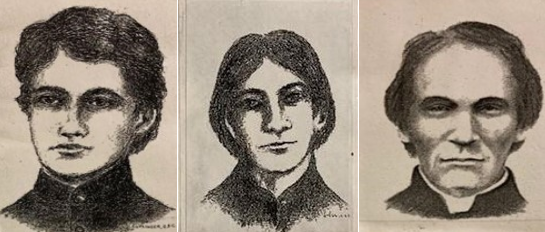
Indeed, two of these men, Brother Gaitan (Urbain) Monsimer (1820-1860) and Brother Anselm (Pierre) Caillot (1825-1845) were fifteen and sixteen when they arrived in New York. Brother Joachim (Guillaume-Michel) André (1809-1844) was thirty-three years old, a tailor, and a cook when in 1844, only a year after arriving at du Lac, he contracted tuberculosis and died. He was the first Holy Cross religious to die at the university.
The two youngest might have had stellar careers as teachers: Gaitan was thought to be an excellent writer and gifted in mathematics; and the reader will recall that Anselm was chosen by the bishop to go with Brother Vincent to teach in Vincennes, Indiana.
Brother Gaitan was assigned by Father Sorin as a member of the Gold Rush group (a story for another time) and eventually left the congregation and returned to France in 1850.
Brother Anselm spent only a few months in South Bend before he was assigned to teach in an elementary school in Madison, Indiana. On a day warm enough to take some of his students for a swim in the Ohio River, he drowned at age 20.
Today, one will look in vain around Our Lady’s University for any recollection of the names of these early founders of Notre Dame. They are the men behind the king—“the six companions”. Yet I believe that Father Sorin would have been the first to celebrate them as mes cher frères et mes collaborateurs [my dear brothers and my colleagues].
Brother Philip Smith, C.S.C. is archivist for the Midwest Province of Brothers, Congregation of Holy Cross. He can be reached at psmith@brothersofholycross.com.
Source for images: Congregation of Holy Cross Archives
Editor’s note: A previous version of this article referred to Br. Philip as the archivist for the Congregation of Holy Cross at large rather than for the Midwest Province of Brothers, Congregation of Holy Cross. This has since been rectified. We apologize for any inconvenience.
